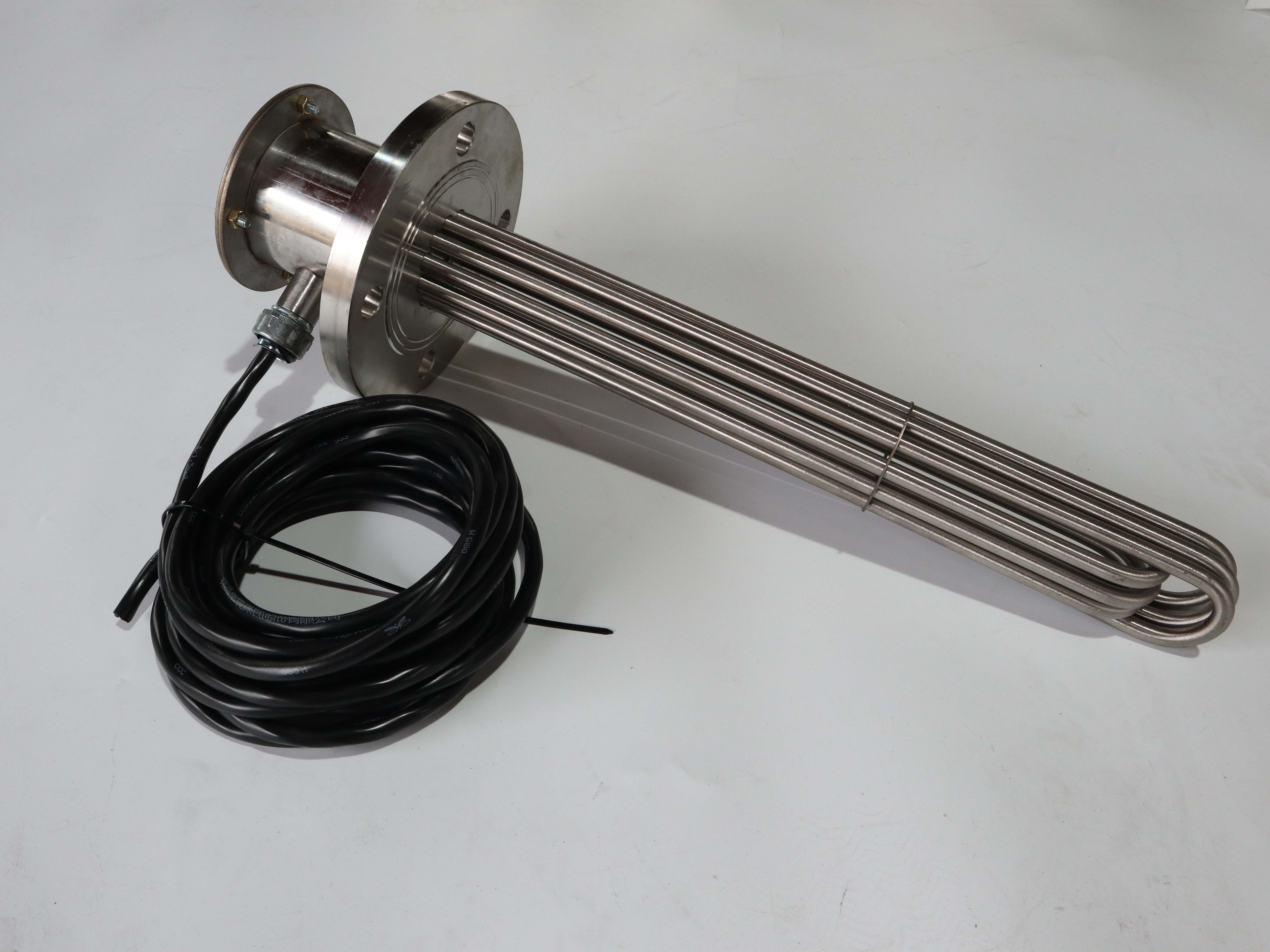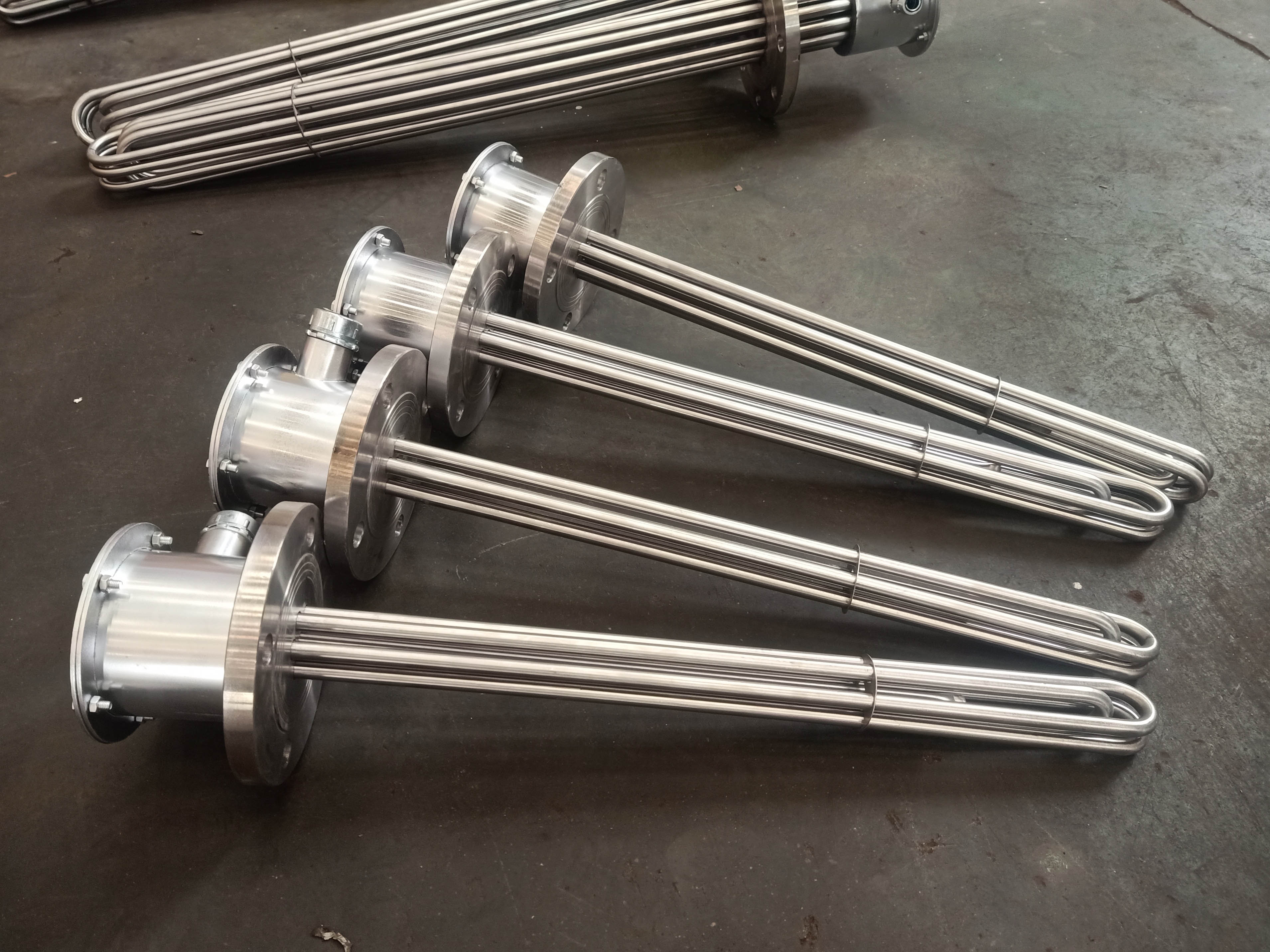1. Choose the material based on the heating medium:
Ordinary water: If heating ordinary tap water, a flange heating tube made of stainless steel 304 material can be used.
Hard water quality: For situations where the water quality is hard and the scale is severe, it is recommended to use stainless steel 304 with a waterproof scale coating material for the heating tube. This can reduce the impact of scale on the heating tube and extend its service life.
Weak acid weak base liquid: When heating corrosive liquids such as weak acid weak base, corrosion-resistant 316L material heating rods should be used.
Strong corrosiveness and high acidity/alkalinity liquid: If the liquid has strong corrosiveness and high acidity/alkalinity, it is necessary to choose electric heating tubes coated with PTFE, which has excellent corrosion resistance.
Oil: Under normal circumstances, stainless steel 304 thermal oil furnace electric heating tubes can be used to heat oil, or iron materials can be used. However, iron materials are prone to rusting, but their cost is relatively low.
Air dry burning: The material of the air dry burning heating tube with a working temperature of around 100-300 degrees can be stainless steel 304; The electric heating tube of an oven with a working temperature of around 400-500 degrees can be made of stainless steel 321 material; The furnace heating tube with a working temperature of around 600-700 degrees should be made of stainless steel 310S material.

2. Select flange type and pipe diameter based on heating power:
Low power heating: If the required heating power is small, usually several kilowatts to tens of kilowatts, threaded flange pipes are more suitable, and their sizes are usually 1 inch, 1.2 inches, 1.5 inches, 2 inches, etc. For low-power heating, U-shaped heating tubes can also be selected, such as double U-shaped, 3U shaped, wave shaped and other special-shaped heating tubes. Their common feature is double headed heating tubes. When installing, two installation holes 1mm larger than the fastener thread need to be drilled on the container such as the water tank. The heating tube thread passes through the installation hole and is equipped with a sealing gasket inside the water tank, which is tightened with nuts on the outside.
High power heating: When high-power heating is required, ranging from several kilowatts to several hundred kilowatts, flat flanges are a better choice, with sizes ranging from DN10 to DN1200. The diameter of high-power flange heating pipes is generally around 8, 8.5, 9, 10, 12mm, with a length range of 200mm-3000mm. The voltage is 220V, 380V, and the corresponding power is 3kW, 6kW, 9KW, 12KW, 15KW, 18KW, 21KW, 24KW, etc.

3. Consider the usage environment and installation method:
Usage environment: If the humidity is high, you can choose to use a flange electric heater with epoxy resin sealing at the outlet, which can effectively improve the ability to deal with humidity problems;
Installation method: Choose the appropriate flange heating tube according to different installation requirements. For example, in some situations where heating tubes need to be replaced frequently, a combination of flange heating tubes connected by fastening devices is more convenient, and single replacement is extremely easy, which can greatly save maintenance costs; For some occasions that require extremely high sealing performance, welded flange heating pipes can be chosen, which have better sealing performance.
4. Determine the surface power density of the heating element: Surface power density refers to the power per unit area, and different media and heating requirements require appropriate surface power density. Generally speaking, high power density may cause the surface temperature of the heating tube to be too high, affecting the service life of the heating tube and even causing damage; If the power density is too low, the desired heating effect may not be achieved. The appropriate surface power density needs to be determined through experience and rigorous calculations based on specific heating media, container size, heating time, and other factors.
5. Pay attention to the maximum surface temperature of the heating element: The maximum surface temperature of the heating element is determined by factors such as the characteristics of the heated medium, heating power, and heating time. When choosing a flange heating tube, it is important to ensure that its highest surface temperature meets the temperature requirements of the heating medium, while not exceeding the temperature limit that the heating tube itself can withstand, in order to avoid damage to the heating tube.
Post time: Dec-20-2024




